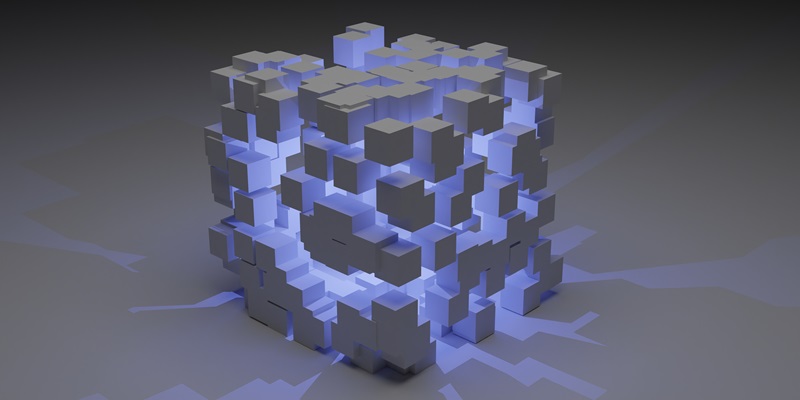Polygon, initially known as Matic Network, has gained immense popularity in the blockchain community for its ability to enhance the scalability and interoperability of decentralized applications (DApps) built on the Ethereum network. By providing layer 2 scaling solutions, Polygon significantly reduces transaction costs and processing times, making it an attractive choice for developers aiming to create high-performance DApps.
Advantages of Polygon’s Layer 2 Scaling Solutions
One of the primary advantages of Polygon is its ability to alleviate the high transaction fees and slow confirmation times often associated with the Ethereum network. With Polygon’s layer 2 scaling solutions, developers can build DApps that enjoy fast confirmation times and low transaction costs, allowing users to experience seamless and cost-effective interactions on the blockchain.
Increased Scalability and Interoperability
Polygon’s architecture is designed to be interoperable with Ethereum, enabling developers to create DApps that can leverage the strengths of both networks. By utilizing Polygon’s layer 2 solutions, developers can overcome Ethereum’s limitations in terms of scalability, providing a more efficient and scalable platform for their DApps. This interoperability also allows for seamless integration with the existing Ethereum ecosystem, expanding the possibilities for widespread adoption.
Polygon’s Architecture and its Compatibility with Ethereum
Polygon operates as a scalable, secure, and independent network that seamlessly compatible with Ethereum. It achieves this through its unique architecture, which utilizes a combination of Ethereum’s security and Polygon’s layer 2 technology. By building on the Polygon network, developers can tap into the robustness and security of the Ethereum blockchain while benefiting from Polygon’s scalability enhancements.
Setting up a Development Environment for DApp Development on Polygon
Before diving into DApp development on the Polygon network, it is essential to set up a development environment that streamlines the coding process. This involves configuring the necessary software tools, such as the Polygon development kit, Solidity compiler, and Ethereum wallet, to facilitate efficient development and testing.
Defining the Purpose and Functionality of Your DApp
To build a successful DApp, it is crucial to have a clear vision for its purpose and functionality. Whether it is a decentralized finance (DeFi) application, a non-fungible token (NFT) marketplace, or a gaming platform, outlining the specific goals and features of your DApp will serve as a roadmap for its development.
Developing Smart Contracts for your DApp, Considering Polygon’s Unique Features
Smart contracts form the backbone of any DApp, as they govern the logic and execution of transactions on the blockchain. When developing smart contracts for your DApp on Polygon, it is essential to consider the unique features of the network, such as its fast confirmation times and low transaction costs. By optimizing your smart contracts for Polygon, you can ensure that your DApp can deliver a highly performant and cost-effective user experience.
Creating a User-friendly Front-end for Seamless Blockchain Interaction
Creating a user-friendly front-end is crucial for enabling seamless interaction with your DApp. Using popular frameworks like React or Angular, developers can design intuitive and visually appealing interfaces that allow users to connect with the blockchain effortlessly. Integration with the smart contracts governing your DApp enables real-time interaction and ensures a smooth user experience.
Testing your DApp on the Polygon Mumbai Testnet
Before deploying your DApp on the Polygon mainnet, it is essential to thoroughly test it in a controlled environment. The Polygon Mumbai testnet provides a sandboxed environment for developers to identify and address any issues or bugs before making their DApp available to the wider audience. This step ensures that your DApp functions as intended and delivers the expected user experience.
Deploying your DApp on the Polygon Mainnet
Once testing is successful, it is time to deploy your DApp on the Polygon mainnet. This step requires a small amount of MATIC tokens to cover transaction fees. By deploying on the mainnet, your DApp becomes accessible to a broader user base, allowing them to experience the benefits of Polygon’s scalability and interoperability firsthand.
Implementing SEO Strategies to Promote your DApp on the Polygon Network
Promoting your DApp is crucial for gaining user adoption and maximizing its potential. Implementing search engine optimization (SEO) strategies can significantly enhance the discoverability of your DApp. Identify relevant keywords, create quality content about your DApp, build backlinks, and engage on social media platforms to attract users and increase visibility within the blockchain community. By optimizing your DApp’s online presence, you can drive organic traffic and expose your DApp to a wider audience.
In conclusion, building high-performance DApps on Polygon’s Layer 2 scaling solution presents an exciting opportunity for developers looking to leverage the scalability and interoperability of the Ethereum ecosystem. By following the outlined steps, developers can harness the power of Polygon to create DApps that offer enhanced transaction speed, cost-efficiency, and seamless integration with Ethereum. With the right approach and strategic promotion, DApps built on the Polygon network have the potential to revolutionize various industries and drive the mass adoption of decentralized technologies.

